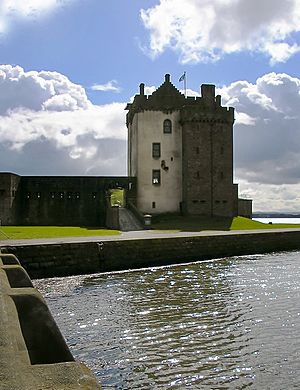Pedro de Negro facts for kids
Sir Pedro de Negro or Sir Pedro Negro (died 1551) was a brave Spanish soldier. He fought for the English kings Henry VIII of England and Edward VI of England in battles across France and Scotland.
Contents
Pedro's Military Career and Knighthood
Pedro de Negro led cavalry soldiers who used muskets. He fought during a war between England and Scotland called the Rough Wooing. This war started in 1544. It began because England wanted Mary, Queen of Scots to marry their young king, Edward VI.
Both sides in the war used skilled soldiers from other countries. For example, an Italian expert named Niccolo da Modena made leather armor for the English cavalry's horses. By April 1547, Pedro de Negro was getting a yearly payment of £100 from the English government. This payment was like a salary for his service.

After a big battle called battle of Pinkie in September 1547, Pedro de Negro was made a knight. This honor was given to him by the Duke of Somerset at Roxburgh Castle. Two other Spanish captains, Christpher Diaz and Alonso de Ville, also became knights. King Edward VI even gave Pedro de Negro a special reward of a half mark (about 6 shillings and 8 pence) on New Year's Day. English records sometimes called him "Petro Negro" or "Peter Negroo."
The Siege of Haddington
The English army took over and built defenses around the town of Haddington, East Lothian in Scotland. Haddington was important because it was close to the coast. This meant supplies could arrive by sea and land. French and Scottish forces soon surrounded Haddington, trying to take it back. This was known as the siege of Haddington.
In June 1548, the English commander, Grey of Wilton, chose Pedro de Negro and 100 Spanish soldiers to help defend Haddington. These soldiers were part of a larger group led by Pedro de Gamboa. On June 29, 1548, Pedro Negro and his troops tried to get into the town. However, they could not break through the enemy lines.
Breaking Through Enemy Lines
On July 7, 1548, an English soldier named Thomas Holcroft described a daring plan. Pedro de Negro would lead 150 mounted soldiers, carrying supplies, through the French lines. They would ride from Linton bridge to help the trapped defenders in Haddington. Some of these soldiers would then return to the English camp. Others would stay in Haddington to help with its defense.
The Scottish leader, Regent Arran, ordered his men to block the path to Haddington. But according to a Spanish story, Pedro de Negro successfully broke through! The story says the Spanish and English cavalry rode into Haddington carrying bags of gunpowder. To avoid riding back through the enemy, they killed their own horses outside the town gates. The dead horses helped keep the French away. Later, after the French and Scottish left, Pedro de Negro buried the horses in three large pits.
Even after this, the siege continued for a while. At the end of July, a French diplomat reported that everyone in London was talking about Pedro Negro's brave actions. However, some people wondered exactly when this event happened.
In early 1549, Pedro Negro and his Spanish soldiers moved to Broughty Castle near Dundee. They joined another English commander, John Luttrell. In July, Luttrell complained that the Spanish soldiers had not yet received their pay or new clothes.
Pedro and Captain Julian
In May 1549, Captain Julián Romero was stationed in Northumberland. Pedro Negro was nearby. A Scottish story mentions that Spanish soldiers led by "Julius Romanus" (Julián Romero) were defeated and captured near Coldingham in the spring of 1549.
Later, in September 1549, Pedro was blamed by other Spanish soldiers for Captain Julián Romero's capture by the Scots. This disagreement even led to Captain Gamboa being murdered in London.
Lady Home and the "Moor"
Marion Haliburton, Lady Home, returned to Hume Castle after the English lost it. In March 1549, she wrote a letter to Mary of Guise, the Scottish Queen's mother. She spoke highly of the Spanish cavalrymen, who owed money to her villagers. She said they behaved "like noble men." She also mentioned "the Mour," saying he was a very skilled rider. The "Mour" or "Moor" might have been an African officer among the Spanish cavalry.
Pedro's Final Days
Pedro Negro died in London on July 14, 1551. He passed away from a serious illness known as the "sweating sickness." In his will, he named his friend Captain Christopher Diaz as the person to handle his affairs. He left all his belongings to his son, who was still a child. He also left a smaller amount of money to a daughter he might have had in Italy.
His last name, "Negro," means "black" in Spanish. Some people think this means he might have had African ancestors. Others believe he belonged to a family named "Negro" from a city called Genoa, in Italy. Many people from this family moved to Spain and Portugal.

